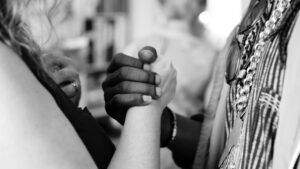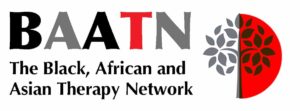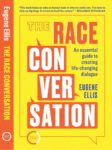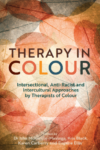 Taking a proactive stance against racism means engaging our minds, bodies and interpersonal selves. How can we develop the capacities we need for this essential and often deeply challenging work? Psychotherapist Eugene Ellis, founder of the Black, African and Asian Therapy Network, author of The Race Conversation and co-editor of the new book Therapy in Colour, outlines three core resources to help therapists stay on – or come to – the path of anti-racist practice.
Taking a proactive stance against racism means engaging our minds, bodies and interpersonal selves. How can we develop the capacities we need for this essential and often deeply challenging work? Psychotherapist Eugene Ellis, founder of the Black, African and Asian Therapy Network, author of The Race Conversation and co-editor of the new book Therapy in Colour, outlines three core resources to help therapists stay on – or come to – the path of anti-racist practice.
Author Eugene Ellis
The first thing therapists, or in fact anyone, experiences when they hear the words ‘anti-racist’ is most likely dread. This is a universal experience, whatever racial identity has been assigned to you, or whatever racial identity you personally identify with.
There is a tendency to avoid the hard questions or avoid race altogether. There is also a tendency to increase our defences and a tendency to shut down on our compassion. Many people would agree that they want to be anti-racist, but the very act of taking a proactive stance against racism deeply challenges our personal identity on a bodily, emotional and cognitive level, and we can find ourselves sometimes turning into the type of person we don’t even like.
For some people, the challenge is very visceral, with uncomfortable somatic experiences that hijack us staying in the present. For others, the challenge is more cognitive, where the mind works hard to bring understanding to what is essentially intergenerational relationship trauma and gets itself tied up in cognitive knots. There needs to be thinking and theory-making, of course, and thinking through the issues is an excellent start, but the cognitive mind alone is not enough. So how can we begin the journey of turning towards being anti-racist?
There is no doubt that we need to resource ourselves. There is also the understanding that being anti-racist is different for racialised people than it is for white people. The saying ‘the body keeps the score’ is very relevant here. The history of race is in our bodies, and attending to the body is an excellent resource regardless of your racial identity. The body has its own wisdom, and I have come to understand that it is wise to follow it. But what do I mean by the body as a resource?
It is known that our brains and nervous systems hold unconscious memories from our generational past, which operate on the non-verbal level. Race does not just show up when we speak or act. Race mostly shows up when we are not speaking. Our bodies are constantly communicating with each other non-verbally, especially when we are communicating identity and attitudes. Our facial expressions, our tone of voice, the way we come into a room, all communicate so much more than words.
The non-verbal, then, is where much of race is held and shows up. Mindfully tracking the body as race comes in and out of our awareness is then an important aspect of staying on the path of anti-racist practice.
Another resource to support anti-racist practice is, of course, ideas and concepts that challenge the racial norms and beliefs that are embedded in the white-dominant culture that we all live and work in. There are excellent books and resources currently being published by UK practitioners and others that are both informative and accessible, which can cut through the confusion and mystery of race and reframe the world in new ways.
Finally, race and anti-racist practice tend to isolate us, so we need to network with others and have them as a resource for us, as well as being a resource for them. Racism was formed through relationship. So, just as with relationship trauma in general, relating to other people where race is on the agenda is both the source of healing and, at the same time, the relationship itself can re-trigger.
This is crucial to the work of anti-racist practice because what I’m terming ‘people as a resource’ phobia, when it comes to the emotions that get evoked through race, is often the default position. It is not possible to do the work of anti-racist practice on your own, so sourcing, developing and connecting with others of like mind is an essential step in the process.
Resourcing our bodies through mindful tracking of our somatic experience around race, resourcing our minds through ideas and concepts that clarify the racial landscape and resourcing through connection with others can give us a platform to engage as an anti-racist practitioner and, at the same time, increase the likelihood of us remaining our normal clear-thinking and ethical selves.
This blog post was first published on PESI UK, the CPD portal for psychotherapists, counsellors, psychologists and mental health professionals. https://www.pesi.co.uk/blog/2023/june/resourcing-the-anti-racist-therapeutic-practitione


 and co-editor of
and co-editor of